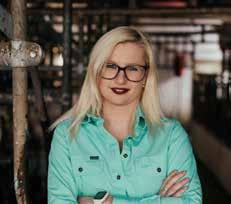
2 minute read
Supporting Vibrant Rural Areas
The Irish dairy sector is built on 4,000 years of history; on the proud tradition of the family farm, passed down through the generations, and it is central to the ongoing vibrancy of rural and regional areas.
Data from the Central Statistics Office shows that over a quarter of a million people are employed in agriculture, with over 130,000 farms across Ireland1. The dairy sector is a vital cog in the social and economic wheel of activity in rural Ireland, providing employment to over 60,000 people, with Teagasc forecasting the need for 6,000 additional workers to enter the sector in the coming years. The increase in milk production has been a massive contributor to the growth in economic activity in rural regions in the last number of years. Taking September as a snapshot alone, 779.3 million litres of milk were taken in by creameries and pasteurisers around Ireland, with farmers from Malin Head to Mizen Head working from dawn to dusk to meet demand.
In the context of the national exchequer, the dairy sector currently contributes €5 billion in exports annually. It is estimated that for every €1 of dairy export value generated, 90c of that is invested in the local and regional economy; money spent in the local supermarket, hardware store, farm supply store, local cafes, pubs and restaurants.
We know that over 60% of consumers feel that the Irish Dairy Sector supports their rural region and findings from the Irish Farm Accounts Co-Operative showed that almost 4 in 10 dairy farmers employ people on the farm. Of that same survey, three quarters feel that dairy provides a sustainable source of income and a good livelihood. Such findings are positive factors in supporting people to work and live within their local region, play a positive role within the community and contribute to the activities in the area.
The contribution by the dairy sector is all the more critical in light of the challenges facing Ireland’s rural regions on issues such as rural depopulation, retrenchment of services such as banking as well as rural aging and isolation. Dairy farms are at heart of these regional communities, directly and indirectly employing many as well as keeping money going in the local economy. Removing or weaking this keystone for regional communities would likely be a significant blow with far reaching consequences. Louise Crowley, a full-time dairy farmer from Croom, Co. Limerick explains how much dairy farmers value their role within the community “Dairy farmers are deeply connected to the areas we live and work in, and whether it is supporting local shops, farm suppliers and businesses to playing our part in community activities, sporting organisations and voluntary groups, it all combines to make a significant and positive impact within our immediate locality and further afield. Protecting, preserving and enhancing, the quality of life in rural Ireland is something that all dairy farmers are hugely committed to.”






